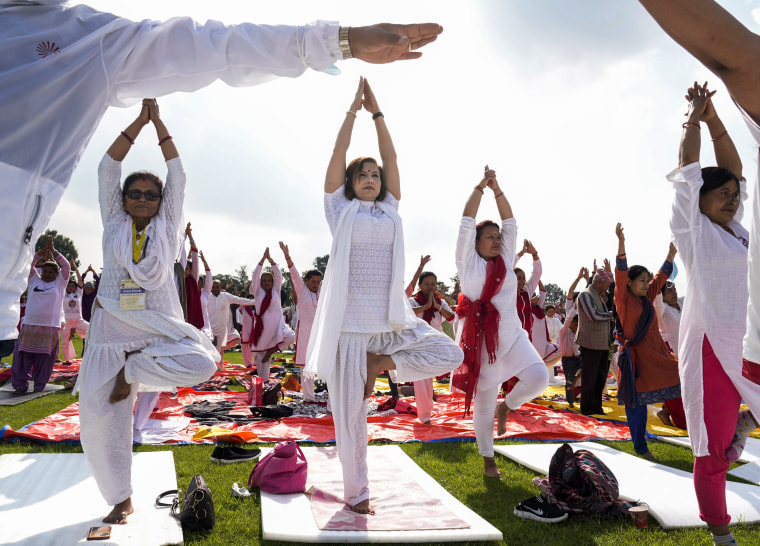For older adults, being able to balance briefly on one foot may predict how long they'll live.
People who failed a 10-second balance test of standing on one foot were nearly twice as likely to die in the next 10 years, according to a report published Tuesday in the British Journal of Sports Medicine.
Unlike aerobic fitness, flexibility and muscle strength, balance tends to be preserved until the sixth decade of life, after which it wanes precipitously, the Brazilian researchers noted.
Exactly why a loss of balance can predict risk of death is not yet known, said the study’s lead author, Dr. Claudio Gil Soares de Araújo, a sports and exercise physician and director of research and education at the Exercise Medicine Clinic-CLINIMEX in Rio de Janeiro.
But poor balance and musculoskeletal fitness can be linked with frailty in older adults, Araújo wrote in an email.
“Aged people falling are in very high risk of major fractures and other related complications," Araújo wrote. "This may play a role in the higher risk of mortality.”
Checking balance on one foot, even for those few seconds, can be valuable way to determine someone's risk of falling. A 2019 report found that the number of deaths from falls for people ages 75 or older was on the rise in the U.S.
“Remember that we regularly need to stay in a one-legged posture, to move out of a car, to climb or descend a step or stair and so on," Araújo said.
Araújo and his colleagues have previously researched the link between movement ability and longevity. A 2016 study found that people’s ability to sit on the floor and then stand up without using their hands or knees for support could predict their risk of death over the next six years.
How does balance predict longevity?
To explore whether a balance test might reveal insight into a person’s risk of death from any cause during the next decade, Araújo and his team reexamined data from the 1994 CLINIMEX Exercise cohort study, which assessed associations among physical fitness, cardiovascular risk factors, and the risk of developing poor health and dying.
For the new report, the researchers focused on 1,702 participants from ages 51 to 75 — average age 61 — at their first study checkup, when weight, waist size and measures of body fat were collected. The researchers included only people who could walk steadily in their analysis.
At the first checkup, participants were asked to stand on one leg for 10 seconds without holding onto anything to support themselves. The participants, who were allowed three tries, were asked to place the front of the uplifted food on the back of the weight bearing leg, while keeping their arms at their sides and their gaze fixed straight ahead.
Overall, one in five failed the test.
The researchers noted that the inability to pass the test rose with age. In general, people who failed the test tended to be in poorer health than those who passed, with a higher proportion being obese, having cardiovascular disease and unhealthy blood cholesterol levels. Type 2 diabetes was three times more common among people who failed the test as those who passed.
After accounting for factors such as age, sex, BMI, history of heart disease, hypertension, diabetes and high cholesterol, the researchers found that the risk of death within 10 years was 1.84-fold higher in participants who failed the balance test.
The good news, Araújo said, is “it is never too late to improve balance by specific training. A couple of minutes a day — at home or in a gym could help a lot.”
Studies like this provide a scientific basis for deciding on the types of measurements that will help evaluate how well a person is functioning physically, said Dr. John W. Rowe, a professor of health policy and aging at the Columbia University Mailman School of Public Health.
During a physical, doctors typically check people’s hearts, lungs, cholesterol and blood pressure. But for the most part, they aren’t measuring what shape people are in, Rowe said.
If a doctor determines a patient has balance issues, a program can be prescribed to help improve fitness and balance.
“And if the doctor asks the patient to do the one-leg stand and the patient says, ‘what good is that,’ the doctor can say there is an article showing that this can predict life expectancy,” said Rowe.
